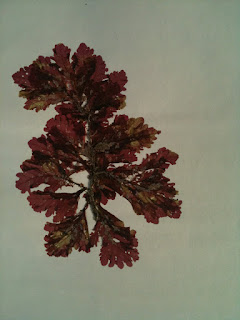Fear and trembling was the order of the morning – two final assessments today!
When I arrived at 8.50 am, garden fork in hand to weed the herbal beds into shape, Amy was already there praying to her lawn shears. Divesting my Sherpa backpack of its organic mulch (aka seaweed – rinsed and dried following the strict biodynamic/organic/maniac gardener technique) I could see that others had been there before me.
Immaculate gardens frothing with flowers, bees and neatly raked soil surrounded my bulging bed. Sophie had a beautiful arrangement of French pansies and marigolds held in a centrifugal force against the wild nature of her fennels and dills.
Margaret had contrived to get every herb to blossom on the day – even the Echinacea!- labelling each with not only plant name, but the body organ it worked on.
Ally’s elegant woven willow fencing curved round her perfecti-lienar arrangement of classical herbs.
Chrsta’s garden of teas and bees was bursting with bright blue borage flowers, her towering burdock and lots of bees!
Amy’s checkerboard of nervices and sedatives was being overrun by grass she and I were left to hack, pull and tweeze our green pathways into submission and hope for the best. The preparation hour loomed….
Back in the classroom we were surprised (no, make that delighted) to learn that Catherine had opened the day for us to prepare our herbal remedies in a peaceful and therapeutic manner. Stress out, calm in! We promptly spread ourselves and accoutrements across the tables and set to. Margaret was already whisking up a mellifluous Calendula cream, a glowing, golden yellow nectar in a jar, whilst Ally concocted tinctures from freshly collected flowers.
Christa brewed and stewed her various teas and then laid out a cocktail party of glasses, umbrellas, mints and borage-laced ice cubes.
Amy mashed and pounded her oats into a fine, creamy milk and then mixed them with tiny sweet violets to make one of her three insomnia cures.
I drenched carrageen in spring water, infused sea buckthorn berries and soaked Calendula flowers in almond oil. Whisking and stirring I aimed to bring the whole together into a soothing cream for dry, eczema prone skin. By lunch I was still standing with my whisk – a granular, globular pool of soupy lotion in my bowl. Fortunately, I had brought one in I made the night before J
Assessment 1 - Catherine returned at 2pm and we presented our day’s work to her. As ever, she was more gracious than surely could be expected given our dismal self-flagellating assessment of our efforts. But she cheered us up and we all left feeling that perhaps we had scraped through on a lucky break.
Assessment 2 - Up to the plots where Leigh, the RBGE’s Director of Education, came to scrutinize us, our horticultural knowledge and personal decisions in devising and laying out our beds. I went first (by default only as a D) and expounded happily on my choices and successes.
However, I was soon drawn up short and asked to explain why I had created a garden of familiar herbs and not extended myself (good question). Also, Leigh wanted to know where had I gone wrong and how would I do it differently? And finally what score out of 10 would I give myself? Crikey! The sun beating on my brain, I acknowledge that I had a lot to learn (obviously), should have stretched my plant choice further and that my personal rating of 9 was just plain Bolshy…..
The others fared much the same fate, sweaty palms and nervous twitches emerging just at the wrong moment. But in the end, once again we parted consoled that Catherine was the final arbitrator and that our efforts to create our own little herbal Chelsea gardens were in fact not a bad start after all.









































